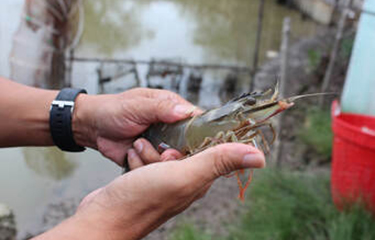Precompetitive collaborations have become an important platform for companies in the seafood industry to effectively address sustainability issues.
These essential alliances allow groups of companies to tackle complex problems that inhibit the development or delivery of products and services.
Sea Pact is one such precompetitive collaboration that’s doing more than simply helping its members navigate the complexity of sustainable seafood; it’s also developing a new leadership model for seafood sustainability that puts the industry in the driver’s seat.
The group, founded by six supply chain seafood distribution companies in 2013, started to see new commitments, policies, and initiatives crop up around responsible seafood sourcing and decided that banding together to initiate change was more powerful than instituting policies individually.
“The [original] companies recognized the need to get out ahead of emerging sustainability issues and support the implementation of sustainable practices in seafood while reducing barriers,” Sea Pact Executive Director Sam Grimley said.
In the seafood industry, like many natural resource sectors, models for change focus on retailer and market commitments, as well as procurement requirements, both of which drive the adoption of sustainable practices up and down the supply chain.
As distributors, Sea Pact members handle products from as many as 100 different fisheries. Addressing unique middle supply chain challenges not only benefits Sea Pact members, but creates a model for a more efficient flow of sustainable products by developing strategies to overcome barriers, such as bottlenecks, between producers and the end market.
The Sea Pact model includes a grants program that allows member companies to identify sustainable innovation. The program, funded by the company themselves along with philanthropic support, initially addressed the best available opportunities for advancing sustainability in seafood with few restrictions or guidelines on what the organization would fund. In its infancy, Sea Pact was just beginning to learn about the gaps, needs, and opportunities for the seafood industry, adopting the freewheeling approach toward funding allocation as it saw fit.
As the organization grew, it became more selective, honing in on where it could best design or support solutions.
“[Sea Pact] went through a strategic prioritization exercise to identify some of the key strategic sustainability issues that they really wanted to focus on. Now, those are embedded into their project funding program,” Grimley said.
The organization now funds more than 40 projects in 15 countries.
One recent example is a grant to a Halifax, Nova Scotia, Canada-based organization called Otoliths-Lada Canada, which is working to develop an accurate age structure identification mechanism for crustaceans and crab species. The current stock assessment process for crab typically uses the length of the crustacean to estimate age, and is often less accurate than age structure techniques like the one Otoliths-Lada is looking to develop with Sea Pact’s backing.
Another project Sea Pact funded is aiming to bridge the gap between aquaculture and wild fishery stakeholders in California.
NOAA has identified aquaculture opportunity areas in the U.S., but past experiences in the region indicate the potential for tension between wild-caught and farm fishing stakeholders. Ocean Strategies is carrying out the work that will help guide the hopefully harmonious sustainable production of seafood, which also builds on previous grant funding from Sea Pact.
The company's needs and the reality of implementing sustainable practices in the middle of the supply chain have also aligned Sea Pact’s grant-giving with challenges in the tuna market.
Multiple years of funding have allowed Sea Pact to coordinate the expansion of electronic monitoring in the Indian Ocean. The Global Tuna Alliance has also received Sea Pact funding to support supply chain engagement in Japan. While these projects may not seem as though they generate direct value to Sea Pact companies, the Japanese market and seafood industry as a whole are essential components of tuna conservation and can help the seafood supply chain as a whole.
“With the limited funding we have, we felt like these were the projects that could have the greatest impact and best sustainability ROI for our members,” Grimley said.
Sea Pact recently expanded to 11 companies, aiming to return greater value to members in building a collaborative understanding of the challenges and opportunities on the horizon for the industry.
The organization said it would like to expand again in the future but wants to balance growth with goal alignment and in addressing the needs that have made Sea Pact successful over the past decade.
“The existing members have been leaders on sustainability efforts for a few years now, so we are hopeful that other middle supply chain companies will see the value in Sea Pact’s collaboration [and] be willing to join us. Growing our membership will not only increase our overall impact but also expand industry engagement and leadership on sustainability issues,” Grimley said.
Photo courtesy of Sea Pact







